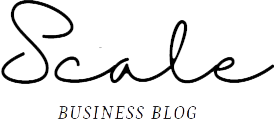Protect Your Pets: How to Detect Signs of Dog Rotten Teeth
Keeping excellent dental hygiene for your dog is just as essential as it is for you and your family. It is difficult to find if a dog is in pain because it can not speak about it. So, it is critical to understand when your dog is in pain so you can give them the best care.
In this section, you will uncover the warning symptoms of rotten dog teeth and the actions you can take to prevent the complication from intensifying.
Prevalent Signs of Rotten Teeth in Dogs
If your dog has any dental condition, you can call it “rotten dog teeth,” as this is a common term that covers everything. Yet, it typically makes people think of tarnished, rotting, and agonizing teeth. Sadly, rotten teeth are a typical issue in dogs. They don’t bother to clean their teeth. Instead, they depend on their pet parents to maintain proper dental health.
Bad Breath
Although it seems generic, this is a sign of rotten teeth. A dental health issue is likely to present if your dog has persistent bad breath. Plaque accumulation, gum disease, and even an abscessed tooth are among dental problems that can create foul breath.
If your dog has horrible breath, it’s time for a trip to the veterinarian’s dental clinic. This will remove the bacteria contributing to their bad breath and protect their teeth from deteriorating. If there are no pet dentists in your area, you can search for “pet dentist near me” to locate one.
Gingivitis
Inflamed gums that are red and swollen are a visible indicator of gingivitis. Underlying plaque is typically present as well. In its latter stages, periodontitis causes the gums to recede from the teeth, creating pockets that may bleed or fill with pus if left unattended.
This likely is what’s causing the bleeding gums in your dog. Any of these signs and symptoms in your pet’s teeth call for instant vet treatment, so do not delay getting to an animal hospital. If you need more info regarding these concerns, it is best to visit their website.
Tartar
Plaque on one’s teeth is a film of bacteria that sticks to the tooth’s surface. If plaque is permitted to build up more, these bacteria can eventually harden into tooth calculus or tartar. Several dental concerns can occur from failing to remove it properly. Having your pet’s teeth cleaned frequently in your home and by a veterinarian can help avoid this issue.
Bear in mind that your dog needs vaccinations and other preventive care even while you work to improve its oral health. Remember to take your dog to a dependable animal hospital if the vaccinations have expired. You can visit their vaccinations page to arrange an appointment with them.
Excessive Drooling
Drool is an inevitable problem for some pet owners. It’s normal for dogs, particularly certain breeds, to drool. Nonetheless, you should pay attention if your dog starts drooling excessively unexpectedly. This can suggest a health condition that either increases their saliva production or prevents them from adequately swallowing it.
These symptoms can originate from different dental issues, including gum disease, loose teeth, an injury, or a bacterial abscess. Abscesses are painful, and if your vet uncovers one, they will likely recommend removing the tooth and giving your pet antibiotics.
Final Thoughts
Taking your dog for routine checks at the vet, feeding it, and giving it a bath are all vital parts of pet care. But you must also take care of its teeth by cleaning them professionally and brushing them regularly. If you see your dog reveals any of the symptoms discussed above, you need to set up a visit with your veterinarian promptly.







